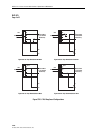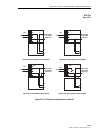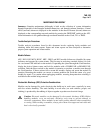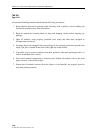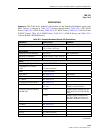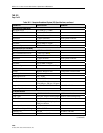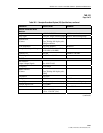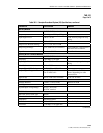
ADCP-61-471 • Issue 4 • June 2000 • Section 2: Operation and Maintenance
2-247
© 2000, ADC Telecommunications, Inc.
TAD-100
Page 1 of 2
MAINTENANCE PHILOSOPHY
Summary:
Soneplex maintenance philosophy is built on the collection of system information
through inspection of the Soneplex modules themselves, and through software interfaces. Central
office (near-end) alarms are displayed on the modules in the chassis. Remote (far-end) alarms are
displayed on the corresponding near-end modules by pressing the DISP RMT switch on the APU.
Alarm information is also gathered through a software interface such as Craft, TL1 or TBOS.
Trouble Analysis Procedures
Trouble analysis procedures found in this document involve replacing faulty modules and
obtaining alarm and status reports. Status and alarm reports are then analyzed to determine
proper system operation and locate trouble.
Module Failures
APU, DLX, DS3 MUX, HLXC, MPU, ODS2, and RLX module failures are identified by status
indicators and reported by system alarms. The first step in analyzing a module failure is to look
for a red status LED indicator on the module. If operating the system through the Craft Interface,
display the Active Alarms screen, and look for modules with a COMM FAIL or BOARD FAIL
condition. Push the Reset switch on the module in question or perform a module reset through
the Craft Interface. If these actions fail to restart the module, unplug and reseat the module in
question. Reseating the module can correct a contact problem and avoid the return of a good
module for repair. Use caution when unplugging modules, ensuring that protection switching is
available for the module being removed.
Electrostatic Discharge (ESD) Protection Considerations
Modules can be damaged by static electricity that builds up in work areas, especially in areas
with low relative humidity. The static buildup in work areas (on work surfaces, people, and
clothing) is produced by the rubbing of objects together to produce an electrical charge.
Caution: Electronic modules can be damaged by electrostatic discharge (ESD). Before
handling modules, wear an anti-static discharge wrist strap to prevent damage to
electronic components. Place modules in anti-static packing material when transporting
or storing. When working on modules, always place them on an approved anti-static mat
that is electrically grounded.






